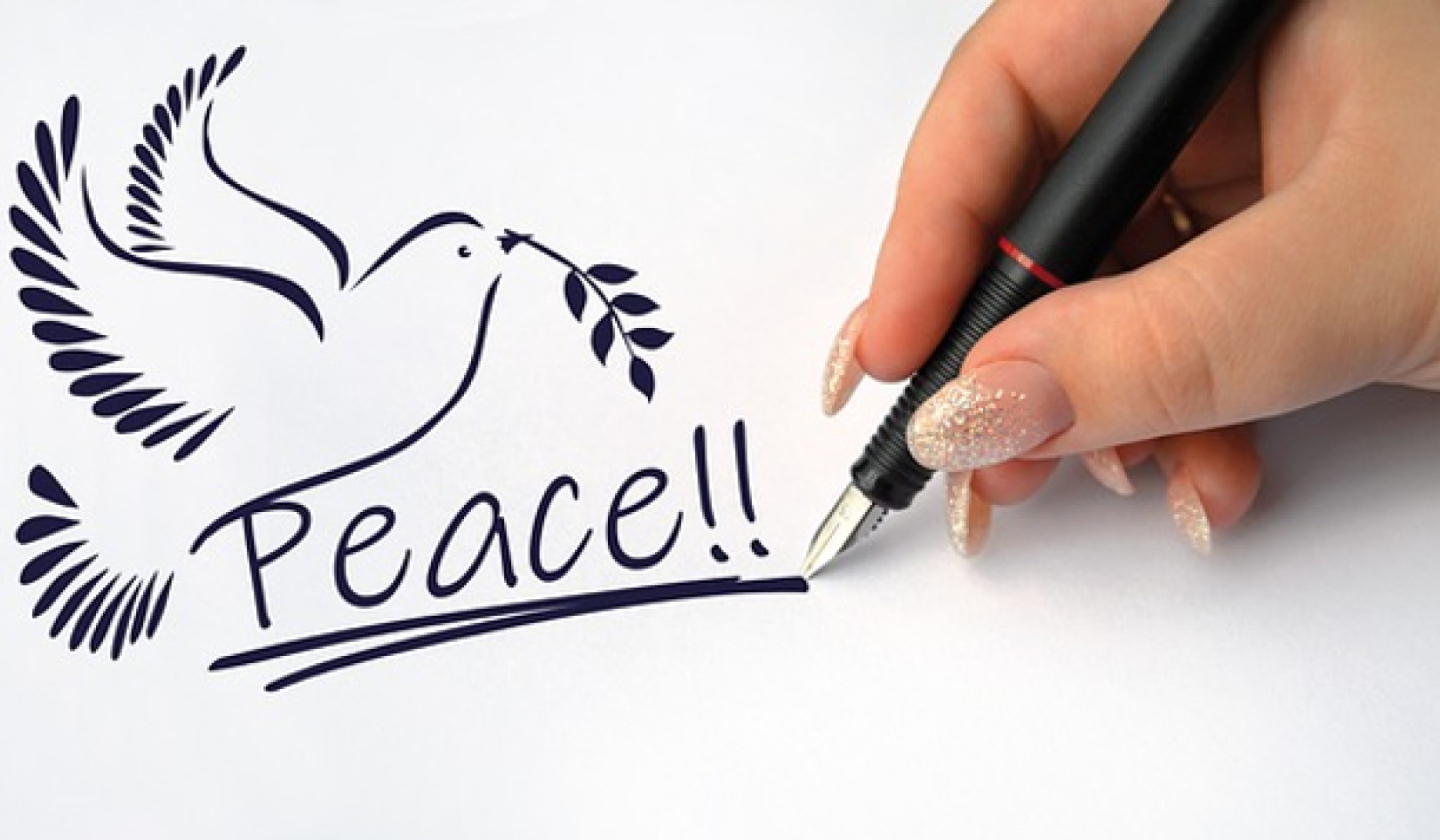
Image by carlostm_10
Identity defines how we view ourselves, who we think we are, and what we think we are capable of. Our deepest beliefs anchor our identity with either our human selves or our souls.
Who am I? is the fundamental question leading us to our highest work because our spiritual selves are not bound to the limits of the world. Our spiritual selves will chart a bolder course and know that we are empowered with infinite potential.
LEARNING TO TRUST YOURSELF
Have you ever felt unable to trust that your work decisions were the ones you truly wanted? I certainly have. There were times when I was too stressed, overworked, or anxious to escape a bad boss to direct my next steps appropriately. Distraction, exhaustion, or anxiety had disconnected me from my spiritual self.
I didn’t trust that version of me to lead me to the work I was called to do. I knew that the person I was in my mind at that moment wouldn’t make the decisions the person I am in my soul desired.
This is a common problem for my clients as well. They come to me fresh off a long and hard season of tireless (and sometimes unfulfilling) work ready for a change, but they sense that they are not the best version of themselves to start making decisions. Before we even get started with working on their resume or networking plan, I counsel them on ways to reconnect with themselves before making any work choices.
If they have the luxury of taking a vacation, travel can broaden their exposure to life and stimulate their spiritual connection. When travel isn’t an option, the important thing is to take time to reconnect with the joys of their life. To stop strategizing about their career, and instead use the time to rediscover the things that make them feel grounded and alive.
Common life-affirming pursuits are time spent with family, time dedicated to hobbies, enjoying nature, or laughing with friends over a delicious meal. The purpose of this time is to activate their higher being, so they’ll be prepared to place their spiritual self in the roles of director, evaluator, and decider of their work choices.
THE QUESTION: IDENTIFY WHO YOU ARE
The first question this chapter asks us to consider is who we are bringing to the process. What version of yourself do you want to be making your decisions? Specifically, the question I invite you to reflect on as we move through this chapter is:
Q: Is my identity anchored in my beliefs?
“Who am I?” or rather who am I supposed to be based on my beliefs? Often when we think about “who we are,” we come up with a perception based on two things—our outward identity and our inward ego. Yet a life anchored in our spiritual beliefs requires that we identify with more.
So, what does it mean to be a spiritual being and to live with our identity anchored in that understanding? How does that spiritual being better prepare us for our work?
There are basic facts that we may use to identify who we are. These are things like:
- Age
- Gender identification
- Race
- Nationality
- Physical impairments
- Religion
- Sexual orientation
- Personality traits
- Social and class rankings
- Affluence or lack thereof
These facts are neutral in meaning, but we place our own biases and value judgments on what they mean for our identity. Two people can come up with entirely different interpretations of what their identity is using the same facts.
Here is an example of how our identity can be shaped differently with the same facts. Imagine a 49-year-old single, heterosexual woman from France, who is a Catholic, and also blind.
PERCEIVED IDENTITY: PERSON A
- 49 is still rather young. I am young.
- France is a great place to be young and single. I am where I need to be.
- Women are emotional. I am too emotional.
- Blind people are more creative. I am creative.
- Catholics are kind and compassionate. I am kind and compassionate.
PERCEIVED IDENTITY: PERSON B
- 49 is past your prime. I am old now.
- France is a hard place to be single. I am stuck in the wrong place.
- Older women are practical. I am practical.
- Blind people are better listeners. I am a good friend because I am a good listener.
- Catholics are rigid and strict. I am too stuck in my ways.
Knowing our factual categories isn’t enough, we have to know what our biases around who we are translate into. We have to know what kind of traits and destinies we may unconsciously be tying our identity to.
EXERCISE:
Take out your journal and consider the following question:
What stories are you telling yourself about your identity and how are they empowering or limiting your work life?
Think about your own characteristics. They do not need to be limited to the ones I have chosen below. Think of anything that is relevant to you. Write them all down. Here are some categories to consider:
- Age
- Gender identification (or lack thereof)
- Race
- Nationality
- Religion
- Sexual orientation
- Height
- Weight
- Body type
- Relationship status
- Family history
- Education
- Income level
- Occupation
- Hobbies
These are just a few to get you started but add anything to your list that you identify with. Things you think it would be important for someone to know if they were going to take over from here and live life as you.
As you look at your list, consider what judgments you have put on each descriptor. What does it mean to you to be categorized as your race? To be from your country of origin? To have your income? To wear your clothing size?
What is the story for good or bad that you have created about your identity? This story impacts who you think you are.
An identity anchored in our spiritual beliefs transcends these categories, but I won’t pretend that dealing with these outward traits, and the stories we tell ourselves about who we are in the human world, isn’t worth exploring as well.
ANCHORED IN SPIRITUAL BELIEFS
When we are anchored in our spiritual beliefs, we are in touch with the glorious, infinite nature of the life force inside of us. That version of ourselves, if we truly believe it exists and firmly anchor our identity to it, is capable of great feats and daring work endeavors. That version of ourselves isn’t tied down to the perceptions we may already have of our identity.
The more we anchor our identities with our spiritual being, the more we are able to release and redefine the negative perceptions we have around our human identity. I can’t emphasize enough the impact this can have on how we will choose to show up in the world, the decisions we make, and the kind of work we can get done in our lives.
YOUR CHARACTER
Your characteristics and traits are easily identifiable. Any actor playing your character will need to know what those traits mean to you. Yet, those categories can be distractions that our ego uses to keep us from connecting with our souls. They can leave us focused on the things that separate us from others and become distorted from our biases and insecurities.
We are our souls above all else. That means something powerful for your work. It means that you are whole and worthy already—right now despite any perceived imperfections.
When we are anchored in an identity based on our spiritual being, we are equipped to live out the script that will help us realize our highest potential and fulfillment. Your character must connect with, and reflect, that identification with your spiritual self. That is who your character was written to be.
UNDERSTANDING YOUR CHARACTER
The next step is to explore your character. It is time to act out your part on the stage of life. To do that well, you’ll need to align the show you have created with your character’s identity. We are building a life and playing a character whether we actively create that character or not. Instead you may be showing up every day and playing your part without any idea of the type of show you want to live in nor who your character should be.
Konstantin Stanislavski was born in 1863. For 75 years, his character was on the stage of life. The legacy of his work continues today. The famous Russian playwright is widely credited as the father of modern acting methods. Most acting techniques have some derivative of Stanislavski’s system. Actors spend their lives trying to understand and perfect his methods.
Instead of seeing acting skills as “fixed” or “natural” talent, Stanislavski’s system showed that realistic acting was a discipline that could be practiced and improved. For our purposes, we will be using the seven questions he believed each actor should ask themselves to understand their character’s role:
- Who am I?
- Where am I?
- What time is it?
- What do I want?
- How will I get it?
- Why do I want it?
- What must I overcome to get what I want?
Not every character in our show will find and pursue their highest work. Many people die never feeling as if they lived up to their full potential. They die wondering if their lives should have been different or if they could have done more with their gifts.
Your perception of your character’s identity is relative because we don’t view the facts (e.g. our gender, race, etc.) in real terms. We use those categories to make relative judgments on the value of our traits based on our own experiences and how we view the world. It is similar to each actor creating a character differently. Actors draw from their own experiences and emotions to decide what their character might think, say, and do.
Yet, characters are identifiable no matter who plays them. Lady Macbeth is always some version of who we expect her to be on stage. A script guides her words and actions, and also creates consistency in the character portrayal.
Anchoring your character to your spiritual beliefs is meant to provide the same structure of a script in life. If you have been living without doing the deliberate work of being the producer and writer of your life, you have been living without a script. Your identity and ego are the only things that have been creating your character.
Thankfully, we know what our show is about. Each episode has a script to follow. As any actor trained in Stanislavski’s system, we will study that script closely to get a better sense of who our character is and should be.
FINDING FULFILLMENT
Fulfillment is found when we live complete and whole in the human world, fully identified with our spiritual self. To be spiritually whole is to bring all parts of yourself together as one; to bask in the glory of your spiritual self, while knowing your potential limitations, previous mistakes, and future obstacles. It is to create a show that is rooted in the daily episodes of real life, while actively manifesting a character that is always identified with the spirit within them. This spirit is what keeps us connected to the whole, worthy, and complete life force that is powerful enough to manifest work that matters.
We need a character that can make work decisions from their soul. We need a character that respects the power and beauty of the soul enough to honor their own life’s potential and the life potential of others. Your character can separate him or herself from their mind’s fears and analysis to observe their soul’s truth.
The ego tries to trick us into believing that we are our minds and nothing else. It tries to get us to ignore the soul and identify only with the mind.
ANCHORING TO YOUR SOUL'S PERFECTION
Your ability to live anchored to your soul’s perfection enables you to show up as the character your show intends you to be. Our soul is beautiful, powerful, and worthy despite any journey our mind may be taking us on. The path to your highest work starts with appreciating that you are whole already.
When your character can believe in their spiritual wholeness, you can anchor your work in your beliefs. When you show up in each episode already whole, you stop giving so much attention to trying to hide or fix yourself and let your work journey play out with patience.
Your soul is worthy despite any mistakes you have made in the past, despite the people you have hurt, the thoughts you have had, and the failures that still lie ahead. The connection to your soul reminds you that you are still worthy of living your fullest life experience and manifesting your best life’s work.
If you are wondering what anchoring your identity in your spiritual self would look like, the best place to start is through your preferred spiritual practice and to spend some time going deeper on your spiritual path. All spiritual practices such as prayer, meditation, worship, or study are designed to strengthen your understanding that the life force within you is connected to a powerful source of creation, peace, and resilience. Any spiritual path you choose to follow will lead you to wholeness.
©2019 by Kourtney Whitehead. All Rights Reserved.
Reprinted with permission of the author.
Article Source
Working Whole: How to Unite Your Spiritual Beliefs and Your Work to Live Fulfilled
by Kourtney Whitehead Do you want more from work than just a paycheck or a title? Are you ready to manifest a work life rooted in joy, purpose, and contentment? Career expert Kourtney Whitehead will guide you on a self-discovery journey to bridge the gap between your spiritual life and your work, and help you bring intention and satisfaction to your professional life. In Working Whole, she shares eight principles that will free you to be inspired and joyful in your life and work callings. (Also available in Kindle format)
Do you want more from work than just a paycheck or a title? Are you ready to manifest a work life rooted in joy, purpose, and contentment? Career expert Kourtney Whitehead will guide you on a self-discovery journey to bridge the gap between your spiritual life and your work, and help you bring intention and satisfaction to your professional life. In Working Whole, she shares eight principles that will free you to be inspired and joyful in your life and work callings. (Also available in Kindle format)
For more info, or to order this book, click here. Asp available as an Audiobook and a Kindle edition.
About the Author
 Kourtney Whitehead's career has focused on helping people reach their work goals, from executive searches to counselling to career transitions. She's held leadership positions at top executive recruiting firms and consulting companies, and is a sought-after speaker and podcast guest. Visit her website at https://simplyservice.org/
Kourtney Whitehead's career has focused on helping people reach their work goals, from executive searches to counselling to career transitions. She's held leadership positions at top executive recruiting firms and consulting companies, and is a sought-after speaker and podcast guest. Visit her website at https://simplyservice.org/
























